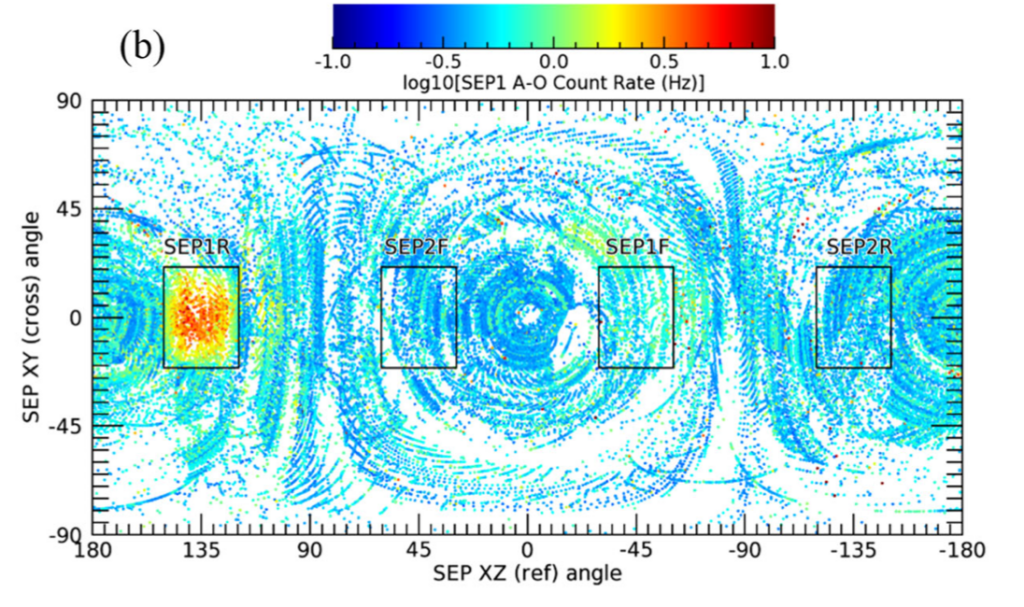The MAVEN team is conducting exciting, new scientific research every day with many of these results being published in leading academic journals. Each month, we’ll be highlighting interesting papers in a jargon-free format. In this Publication Highlight, we looked at “MAVEN SEP Observations of Scorpius X-1 X-rays at Mars: A Midatmosphere Occultations Analysis Technique”, which Ali Rahmati and colleagues published in JGR Space Physics in October 2020.
What do penicillin, Velcro, and microwave ovens have in common? All three, it turns out, were discovered by accident. Scientific discovery involves plenty of painstaking, methodical work—along with happy coincidences, when someone gains new insights from surprise discoveries or even mistakes.
Such a happy coincidence occurred when Dr. Ali Rahmati, a research physicist at the Space Sciences Laboratory at the University of California Berkeley, realized that MAVEN’s Solar Energic Particle (SEP) detector, an instrument built to detect particles from the Sun, could also detect X-rays from outside our solar system. Rahmati, along with the members of the SEP team, quickly realized that these X-rays, which were emanating from the binary system Scorpius X-1—a system consisting of a neutron star and a blue star about 9,000 light years from Earth—could be used to learn more about Mars.
As surprising as this may sound, scientists often use X-rays and other distant sources of radiation to learn about the composition of planetary atmospheres, even neighboring planets like Mars. They use a technique called stellar occultation—a remote-sensing method in which waves (such as ultraviolet, visible, or infrared) emitted by a star are observed in the planetary atmosphere as the star rises or sets behind the horizon of the planet. Components in the planet’s atmosphere absorb these wavelengths, creating a unique spectrum that enables scientists to indirectly study what is in the atmosphere. This method is common for astrophysics and is a key technique for finding out the composition of planetary atmospheres, both in and outside of our solar system.
Using this method, Rahmati and his team looked at the X-rays emitting from Scorpius X-1 (SX-1) as observed by the MAVEN spacecraft during 11 consecutive orbits. The team then compared the occultation observations to models of a density profile—a snapshot of what components are in Mars’ atmosphere and how much is there—that were taken from the Mars Climate Database. The researchers found that their observations closely matched a cold density profile, which corresponds to conditions that include low solar activity, an absence of dust in the atmosphere, and Mars aphelion conditions.

So, what makes this study a happy coincidence? Well, SX-1 wasn’t a target, so it was a complete surprise that MAVEN’s SEP instrument was able to detect these X-rays in the first place. But with this surprise came observations that allowed this team to measure the density profile at low altitudes (50-100 km) that are too low for orbiters to probe, and too high for landers and rovers to measure. This method also allowed the team to get multi-point measurements, which are necessary in order to help us understand the evolution of the Martian atmosphere. Because this range of altitudes has not been investigated before using such a method, this data is allowing scientists to assemble a significant piece to puzzle of understanding Mars’ atmosphere. It is cross-divisional observations such as this, which crosses NASA’s planetary and astrophysics divisions, that show how great science can come from unexpected places.
Using an X-ray binary system from outside our solar system to learn more about Mars is out of the box, and this experience—like previous happy coincidences— taught the MAVEN science team to not rule out the possibility of using data from an instrument in a way that’s different from what the instrument was designed for.
To read Rahmati’s publication, visit: https://agupubs.onlinelibrary.wiley.com/doi/10.1029/2020GL088927
Written by Willow Reed – MAVEN Communication Specialist


